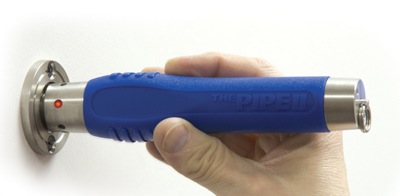Wednesday, February 5th, 2014
State agency takes cost-cutting steps
BWC chief addresses local business leaders
By Doug Drexler
CELINA - The Ohio Bureau of Workers' Compensation is taking steps on several fronts to cut costs and improve service, BWC Administrator Stephen Buehrer said.
He brought that message to more than 20 local businesspeople at a forum hosted by the Celina-Mercer County Chamber of Commerce and Grand Lake Safety Council Thursday at the Fraternal Order of Eagles Lodge in Celina. The bureau has cut its staff from 4,000 people in 1995 to 2,000 today, Buehrer said. It also has cut the time between an accident and when the BWC becomes aware of it from 63 days to a mandated 28. BWC learns of 75 percent of accidents within the first 10 days and 99.9 percent are within the 28-day limit, he said.
In the early 1990s nearly all bureau calls were from injured workers checking the status of their claims. Today most calls are from employers about the rates, he said.
Streamlining the bureau has helped the agency target fraud and control costs.
In 2010, BWC found high use of opiates and narcotics by workers receiving benefits. In 2011, the BWC started tracking doctors and pharmacies and narcotics use dropped by 28 percent and muscle relaxant use fell 73 percent, he said. The bureau saved $22 million and cut prescriptions by 10.9 million doses, he said.
A focus on detecting fraud resulted in 394 convictions and $178 million in recovered costs - $6 for every $1 spent on investigating, he said.
"Most people who get hurt didn't want to get hurt in the first place and want to get unhurt," he said.
The vast majority of claimants get through the system without too much trouble, but about 5 percent get stuck in the system, he said. They may receive the wrong care, employers may fight valid claims or they do not have the education to be retrained for another job, he said. His office must focus on coming up with the best solution for those cases.
Employers are also facing scrutiny. Less than 1 percent of Ohio businesses account for 30 percent of all compensation claims, BWC regional business development manager Jim Wyse said. The bureau has gone to court to shut down a business that had a death and several other claims and it is targeting claims that are wrongfully denied by employers. Ultimately employers would reach settlements with injured workers to prevent long-term payouts, he said.
New forms allow workers to get back to light duty more quickly. Previously, the form asked only if the worker could lift 50 pounds, now lighter limits are included.
Finally, the BWC is asking the legislature to allow it to move employees on disability for more than 45 days to doctors with a proven record of getting people back to work quickly, he said.
While the bureau has cut costs, it has also had good returns on its investments, Buehrer said. The BWC budget called for investment returns of 4 percent, but actual returns of 11 percent enabled the bureau to give back $1 billion to employers, Buehrer said.
The bureau has also tripled funding for safety grants to $15 million. St. Marys recently received $30,000 to purchase a cot lifter for its paramedics through the program. Employers can apply for the grants to buy safety equipment or to pay for safety training.
"The funds are out there, please go get them," he told the local businesspeople.
With the bureau's improved financial situation, it has been able to stabilize its base rates, Buehrer said. Six years ago, the department had the third-highest base rates in the nation, four years ago it had improved to 17 and two years ago, it had the 28th-highest rates.
It plans to switch from rates based on past performance to future outlook as other insurers do, Buehrer said.
"It's time to move into the last century now that it's over," he said. The change to forward-looking rates will lead the bureau to give private employers an eight-month credit on their rate and a year credit to public employers. He expects private base rates to fall 2 percent and public rates to fall 4 percent with the change.




